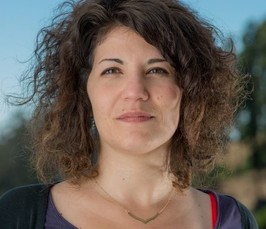About the birth, life and death of electrocatalysts for CO2 reduction
- Date: Feb 7, 2020
- Time: 11:15 AM (Local Time Germany)
- Speaker: Prof. Dr. Raffaella Buonsanti
- Laboratory of Nanochemistry for Energy Research, Institute of Chemi-cal Sciences and Engineering, Ecole Politechnique Fédérale de Lausanne, Switzerland
- Location: Building P
- Room: Seminar Room 2.06
- Host: Interface Science

Among these, the electrochemical CO2 reduction reaction (CO2RR)
holds the promise to close the carbon cycle by storing renewable
energies into chemical feedstocks, yet it suffers from the lack of
efficient, selective and stable catalysts. Furthermore, fundamental
catalytic studies should be complemented with investigations under
commercially-relevant conditions to assure actual progress in the field.
In this talk, I will present our recent group efforts towards the synthesis via colloidal chemistry of atomically defined nanocrystals (NCs) and their use as CO2RR catalysts.
First of all, I will focus on our studies of NC nucleation and growth (the birth). A fundamental understanding of the formation mechanisms is crucial to rationally approach the design of new and more complex catalytic materials.
I will then illustrate how NCs with precisely tunable shapes, sizes and interfaces between different domains can help to identify selectivity rules at the branching nodes which lead to C1 and C2+ reduction products (the life).
Finally, I will discuss the role of NCs as model systems to study degradation pathways using ex-situ and in-situ transmission electron microscopy (the death). These insights are essential when moving towards an actual technological implementation.
I will conclude by sharing our latest results which illustrate that the above discussed catalysts are not only model systems but can be implemented in a gas-fed electrolyzer and sustain the same selectivity at technologically relevant conditions with currents up to 300 mA/cm2 .